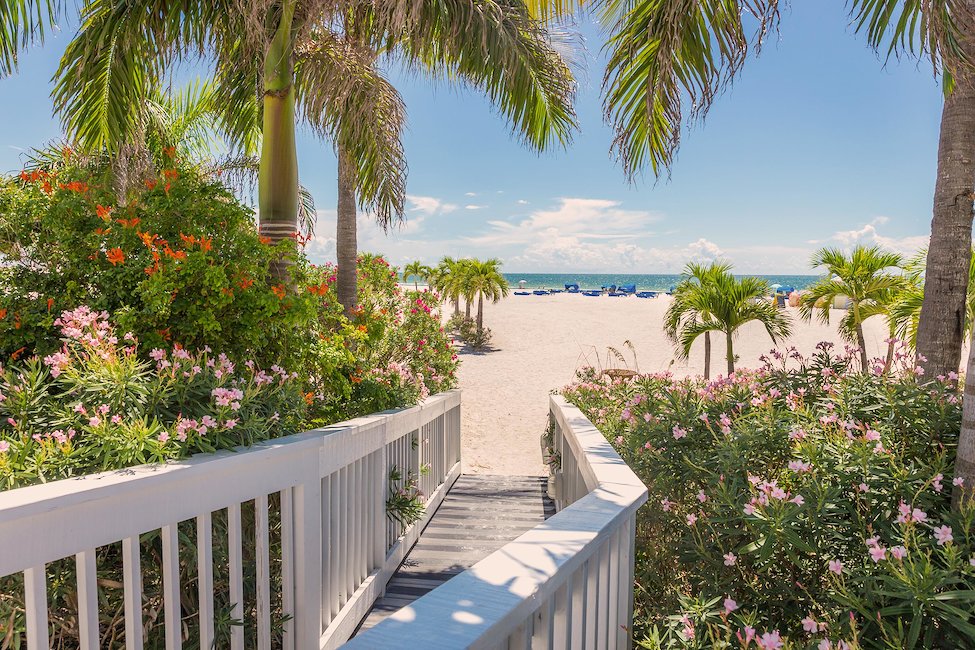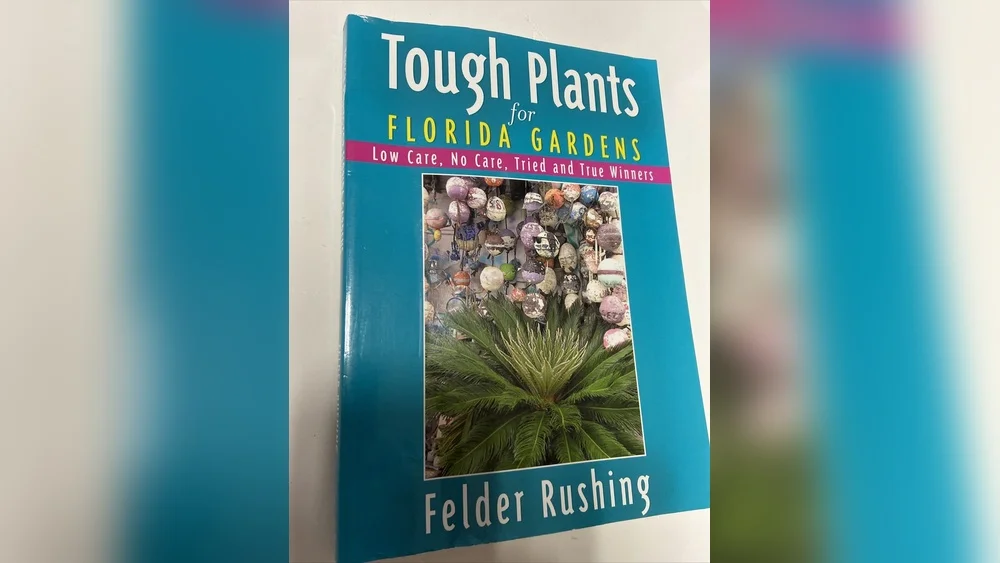If you’re living in Florida or planning to start a garden here, choosing the right plants can make all the difference. You want plants that thrive in the heat, resist pests, and add beauty or even food to your outdoor space.
But with so many options, where do you begin? That’s where the “12 Best Plants Florida Book” comes in. This guide is designed to help you pick the perfect plants that suit Florida’s unique climate and your gardening goals. Whether you’re after colorful flowers, lush greenery, or homegrown veggies, this article will introduce you to the top choices that will make your garden flourish.
Keep reading, and you’ll discover how to create a vibrant, low-maintenance garden that’s perfectly tailored to your Florida lifestyle.
Top Flowering Plants
Florida’s warm climate supports many vibrant flowering plants. These plants add color and life to gardens all year. They thrive with sun and tolerate heat well. Choosing the right flowers can make any outdoor space more inviting. Below are some top flowering plants perfect for Florida gardens.
Lantana
Lantana blooms in bright clusters of red, orange, yellow, or pink. It attracts butterflies and bees. This plant is drought tolerant and grows quickly. Lantana works well as ground cover or in containers. It needs full sun to bloom best.
Muhly Grass
Muhly grass produces airy pink or purple flower plumes. It adds texture and movement to gardens. This grass is low maintenance and resists pests. Muhly grass grows in clumps and prefers sunny spots. It is perfect for borders or mass plantings.
Salvia
Salvia flowers come in shades of purple, blue, red, and white. They attract hummingbirds and butterflies to the garden. Salvia is heat tolerant and drought resistant. It blooms for many months with proper care. This plant loves full sun and well-drained soil.
Hibiscus
Hibiscus features large, showy flowers in tropical colors. It brings an exotic look to Florida landscapes. Hibiscus prefers full sun and regular watering. It blooms almost year-round in warm climates. This shrub can grow tall and make a strong statement.
Bougainvillea
Bougainvillea offers bright, papery blooms in pink, red, purple, or white. It climbs walls, fences, and trellises with ease. This plant thrives in hot, sunny locations. Bougainvillea is drought tolerant once established. Pruning keeps its shape neat and encourages more flowers.
Crotons
Crotons are known for their colorful leaves, but they also flower. Their small blooms add delicate beauty to the foliage. Crotons do well in warm, sunny spots. They need moderate watering and well-drained soil. Crotons brighten up shady garden areas.
Pentas
Pentas produce clusters of star-shaped flowers in red, pink, white, or lavender. They attract butterflies and hummingbirds. Pentas grow well in full sun to partial shade. They bloom continuously with regular watering. This plant is ideal for flower beds and containers.
Best Edible Plants
Florida’s warm climate makes it perfect for growing many edible plants. These plants thrive in the sun and heat. They offer fresh, healthy food right from your garden. Growing edible plants saves money and brings joy. Here are some of the best edible plants for Florida gardens.
Sweet Potatoes
Sweet potatoes grow well in Florida’s sandy soil. They need full sun and warm temperatures. The vines spread quickly and cover the ground. Sweet potatoes are rich in vitamins and fiber. Harvest them in about 3 to 4 months. They store well and taste great in many dishes.
Okra
Okra is a popular vegetable in southern cooking. It loves hot weather and grows fast. The pods are harvested when young and tender. Okra can be fried, boiled, or added to soups. It is high in vitamins and minerals. Plant seeds directly in the garden for best results.
Yard Long Beans
Yard long beans produce long, slender pods. They grow well on trellises or fences. These beans prefer heat and full sun. They mature in about 60 days. Yard long beans are tasty and nutritious. Pick them regularly to encourage more pods.
Tomatoes
Tomatoes are a favorite for many gardeners. Florida’s warm climate supports many tomato varieties. Choose heat-tolerant types for the best harvest. Tomatoes need regular watering and good soil. They grow well in containers or garden beds. Fresh tomatoes add flavor to many meals.
Watermelons
Watermelons need plenty of space to spread. They thrive in Florida’s hot summers. The fruit grows large and sweet with proper care. Watermelons require full sun and well-drained soil. Harvest them when the rind changes color. Watermelons are refreshing and hydrating in summer.
Bell Peppers
Bell peppers grow well in Florida’s warm climate. They come in green, red, yellow, and orange. Peppers need full sun and consistent moisture. Plant seedlings after the last frost date. Bell peppers are great in salads, stir-fries, and more. They are rich in vitamins A and C.
Heat-tolerant Plant Traits
Heat-tolerant plants thrive in Florida’s hot and humid climate. They survive strong sun and high temperatures with ease. Choosing plants with specific traits helps your garden stay healthy and vibrant. These traits improve plants’ chances to grow well all year. Understanding these traits guides your selection from the 12 Best Plants Florida Book. Here are the key heat-tolerant plant traits you should know.
Drought Resistance
Drought resistance means plants need less water to survive. These plants store water in leaves or stems. They reduce water loss by having thick or waxy leaves. Drought-resistant plants stay green during dry spells. They save you time and water bills. Many Florida native plants have this trait naturally. It makes them perfect for hot summers.
Pollinator Attraction
Plants that attract pollinators help your garden stay alive and productive. Bees, butterflies, and hummingbirds visit these plants. They spread pollen, helping flowers produce seeds and fruit. Bright colors and sweet scents draw pollinators in. Heat-tolerant plants with this trait support local wildlife. They also add beauty and life to your yard.
Low Maintenance
Low maintenance plants need little care to look good. They grow well in poor soil and resist pests. These plants require less watering and pruning. Choosing low maintenance varieties saves you effort and money. They fit well in busy lifestyles and beginner gardens. Many heat-tolerant plants from Florida are easy to grow and keep.

Credit: en.wikipedia.org
Native Vs Exotic Plants
Choosing between native and exotic plants shapes Florida gardens uniquely. Native plants grew naturally in Florida’s environment for thousands of years. Exotic plants come from other places and climates. Each type offers distinct benefits and challenges for gardeners.
Benefits Of Native Plants
Native plants fit well with Florida’s soil and weather. They need less water and care than exotic plants. These plants support local wildlife like birds and butterflies. Native species help keep the ecosystem balanced and healthy. Their deep roots reduce erosion and improve soil quality. Using native plants can save money on garden maintenance. They also resist local pests better without chemicals.
Popular Exotic Choices
Many gardeners enjoy exotic plants for their color and variety. Bougainvillea, hibiscus, and plumeria bring tropical charm to Florida yards. Exotic palms add a unique, lush look to landscapes. Some exotics bloom longer and offer different textures. They can create focal points or contrast with native greenery. Exotic plants sometimes need more care and water. Choosing exotics wisely helps protect Florida’s natural areas.
Planting Tips For Florida Gardens
Gardening in Florida requires special care due to its unique climate. Knowing how to plant correctly helps your garden thrive. The right planting tips save time and improve plant health. Follow these key steps to create a beautiful Florida garden.
Seasonal Planting Guide
Florida has two main seasons: hot summers and mild winters. Choose plants that suit each season for best growth. Plant heat-loving species like hibiscus in spring or early summer. For cooler months, try vegetables like carrots or leafy greens. Avoid planting tropical plants during cold snaps. Match plants to the season to avoid damage and promote blooming.
Soil Preparation
Florida soils vary but often need improvement for gardening. Test your soil to check pH and nutrients. Add organic matter like compost to boost fertility. Mix sand or peat moss to improve drainage in heavy soils. Remove weeds and debris before planting. Proper soil preparation helps roots grow strong and plants stay healthy.
Watering Strategies
Water is vital but must be balanced for Florida gardens. Water plants early in the morning to reduce evaporation. Use drip irrigation or soaker hoses to deliver water directly to roots. Avoid overwatering, which causes root rot and disease. During dry spells, increase watering frequency carefully. Adjust watering based on plant type and weather conditions for best results.

Credit: www.ebay.com
Landscaping Ideas
Landscaping ideas for Florida gardens thrive on plants suited to the warm climate. Choosing the right plants brings beauty and life to outdoor spaces. The 12 Best Plants Florida Book offers practical guidance. It helps create diverse and vibrant garden designs. Explore tropical styles, butterfly-friendly spaces, and colorful foliage arrangements to elevate your landscape.
Tropical Garden Styles
Tropical gardens highlight lush, green plants with bold shapes. Palms, hibiscus, and bromeliads add height and texture. Bright flowers and large leaves create a relaxed, exotic feel. Use layers of plants to build depth and interest. Warm colors like red and orange bring energy. Water features complement the natural look and cool the space.
Butterfly And Pollinator Gardens
Gardens that attract butterflies and pollinators support local wildlife. Milkweed, lantana, and salvia provide nectar and habitat. Plant flowers in clusters for easier access. Choose native species to help sustain pollinator populations. These gardens add movement and color as butterflies flutter around. They also improve garden health by encouraging natural pollination.
Colorful Foliage Design
Colorful foliage adds contrast and visual appeal beyond flowers. Plants like crotons, caladiums, and coleus offer vibrant reds, yellows, and greens. Mix leaf shapes and sizes for texture variety. Use contrasting colors to define garden sections. Foliage plants often need less care than flowering types. They maintain beauty throughout the year in Florida’s climate.

Credit: www.holidu.com
Frequently Asked Questions
What Is The Best Plant To Grow In Florida?
The best plants for Florida thrive in heat and humidity. Top choices include lantana, muhly grass, hibiscus, bougainvillea, and sweet potatoes. These native and tropical plants resist drought, attract pollinators, and suit Florida’s climate perfectly for vibrant gardens and edible crops.
What Is The Best Potted Plant For Florida?
The best potted plants for Florida include heat-tolerant natives like lantana, muhly grass, hibiscus, and bougainvillea. These plants thrive in Florida’s hot, humid climate and require minimal maintenance. Choose vibrant, drought-resistant species for colorful, long-lasting blooms in pots.
What Is The Best Low-maintenance Landscape In Florida?
The best low-maintenance landscape in Florida uses native plants like muhly grass, lantana, and salvia. These plants tolerate heat, drought, and pests. Incorporate palms and hibiscus for tropical appeal. Use mulch and drip irrigation to reduce upkeep and conserve water.
What Is The Best Perennial Plant In Florida?
The best perennial plant in Florida is Lantana. It thrives in heat, attracts butterflies, and requires low maintenance.
Conclusion
Choosing the right plants can make Florida gardening easy and rewarding. Native and heat-tolerant plants thrive well in the state’s climate. They save water and need less care. This book helps you pick the best plants for your garden. You will enjoy vibrant flowers, lush greenery, and fresh produce all year.
Start planting with confidence and watch your garden grow beautifully. Gardening in Florida can be simple and fun with the right guidance.

